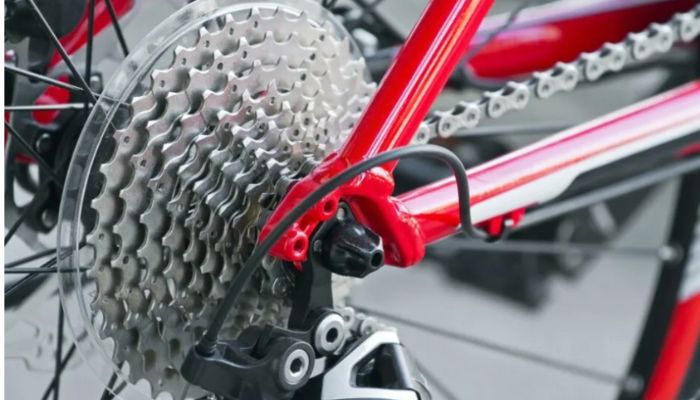
You’re out on a ride and come across a gnarly hill. You know that you could make it to the top if you shifted into a lower gear, but when you go to do so, you realize that you have no idea how many gears your bike has or how to use them. Sound familiar?
Don’t worry, we’ve all been there. In this blog post, we got you covered on mountain bike gears and how to use them.
Let’s get started!
How Many Gears Does a Mountain Bike Have?
Mountain bikes typically have between 12 and 27 gears. The number of gears on your bike will depend on the number of sprockets on your cassette (the cluster of cogs at the back of your bike) multiplied by the number of chainrings up front.
For example, if your bike has an 11-speed cassette with a 2x chainring setup, it will have 22 gears.
How many gears is best for mountain bike?
It really depends on the terrain you’re riding and your personal preferences. Some riders prefer to have fewer gears so they can keep pedaling even on the steepest climbs, while others like to have a wider range of gears to help them tackle all kinds of different trails.
Ultimately, it’s up to you to decide how many gears will work best for you.
If you’re mostly riding on flat or milder terrain, then you might be able to get by with just a few gears. However, if you’re planning on tackling some serious hills or singletrack, then you’ll probably want a bike with more gears.
Most mountain bikes these days are equipped with between 21 and 27 gears, which should be plenty for most riders.
Why do mountain bikes have 12 gears?
Mountain bikes have 12 gears because that’s generally the optimum number for most riding conditions. Having 12 gears gives you a good balance of low gears for climbing and high gears for descending and pedaling on flat terrain.
What is the best gear ratio for a mountain bike?
Again, it depends on the terrain you’ll be riding and your personal preferences. For most riders, a cassette with a range of 11-25 teeth or 11-28 teeth will work well.
If you’re mostly riding on flat or mild terrain, then you might want a smaller gear ratio so you can pedal faster. However, if you’re planning on tackling some serious hills, then you’ll probably want a larger gear ratio so you can maintain a higher cadence while pedaling.
How Do I Use My Mountain Bike Gears?
The easiest way to think about mountain bike gears is in terms of effort required and speed achieved. When you’re pedaling along and feel like you’re putting in too much effort for the speed you’re going, it’s time to shift into an easier gear (a lower number).
This will make pedaling easier but also make you go slower. On the other hand, when you’re flying down a hill and feel like you could go even faster, it’s time to shift into a harder gear (a higher number). This will make pedaling more difficult but also help you pick up speed.
Keep in mind that it’s best to shift before you need to. For example, if you’re pedaling along and starting to feel like you’re working too hard, don’t wait until you’re completely exhausted to shift into an easier gear. The earlier you shift, the more smoothly the transition will be.
Also, when you’re shifting gears, make sure to pedaling while you do so. If you try to shift gears without pedaling, it’s likely that your chain will fall off. And no one wants that!
Conclusion:
We hope this post has given you a better understanding of how many gears mountain bikes have and how to use them! Happy pedaling!
